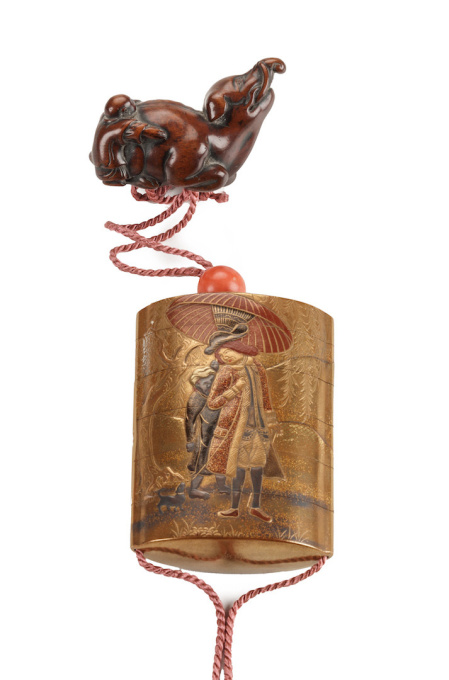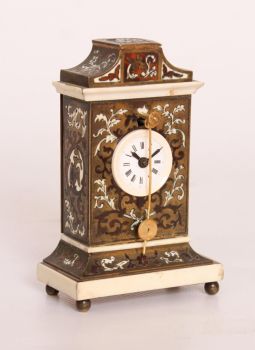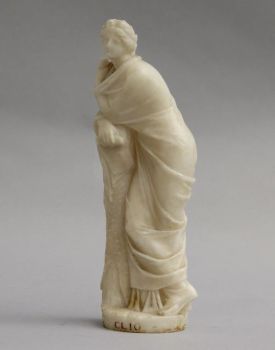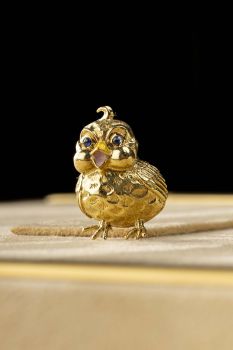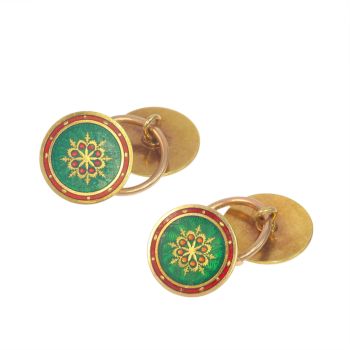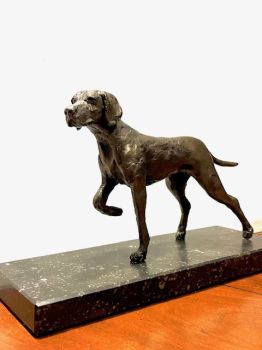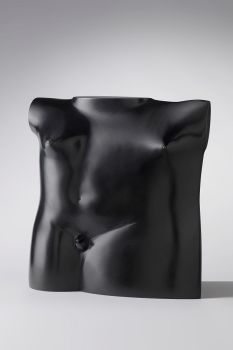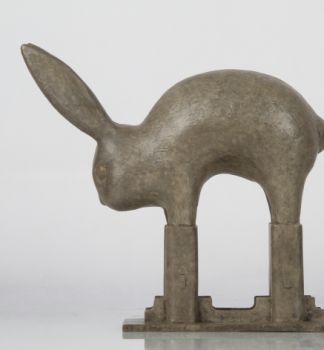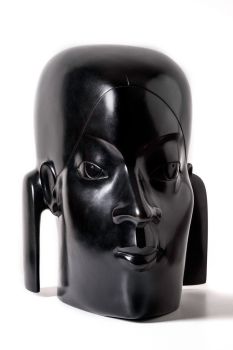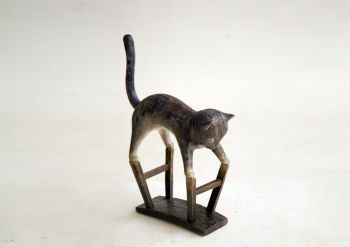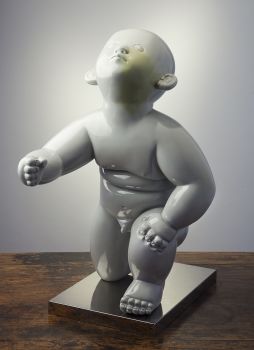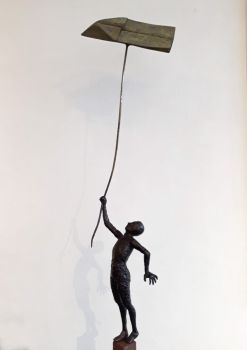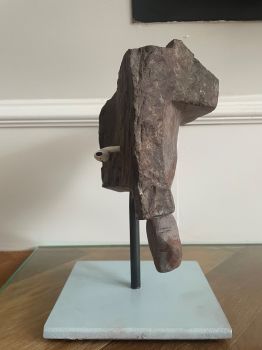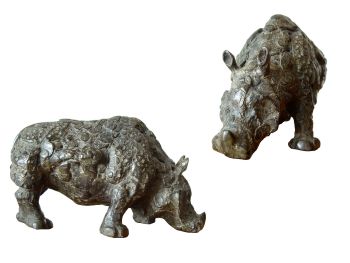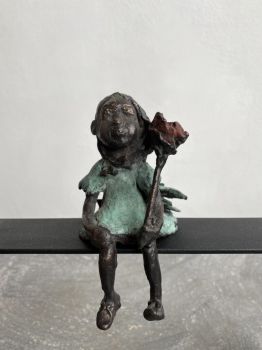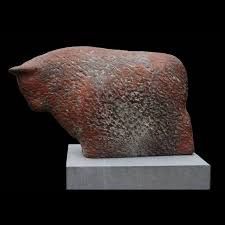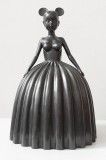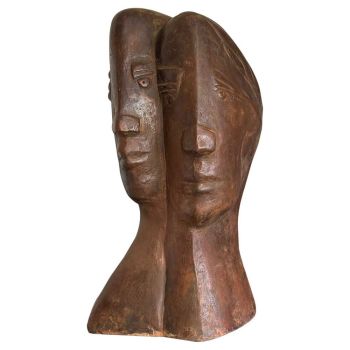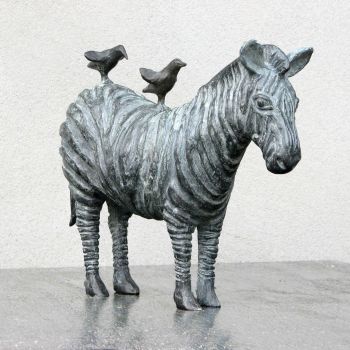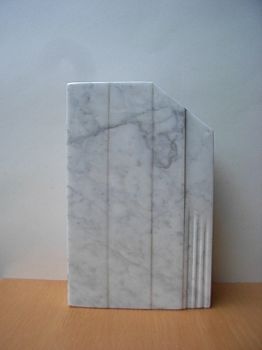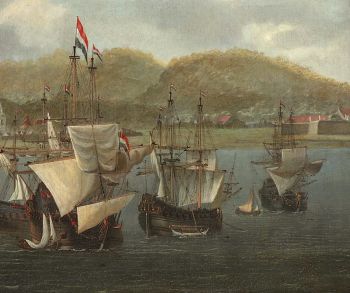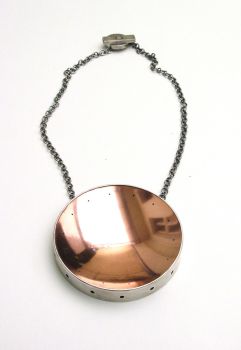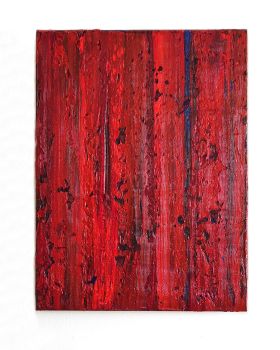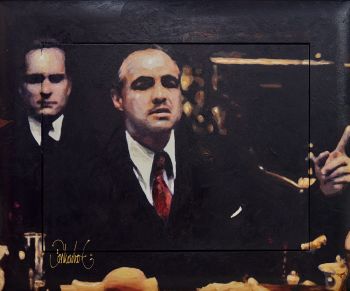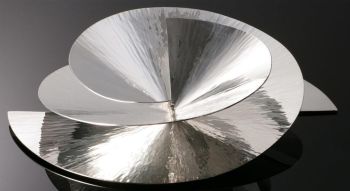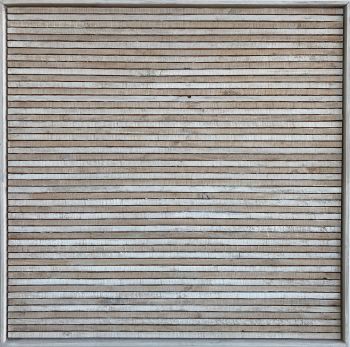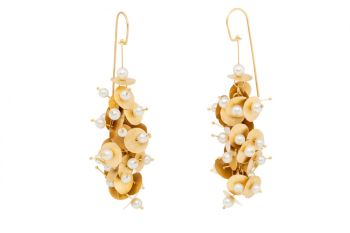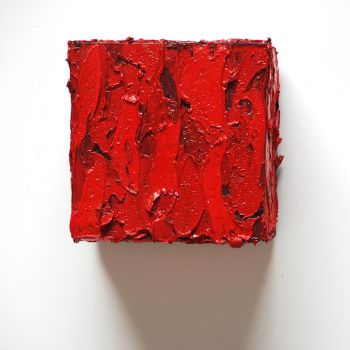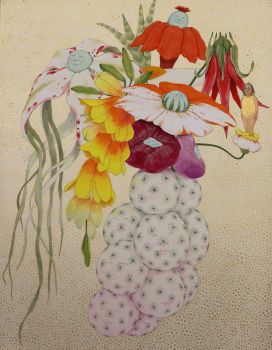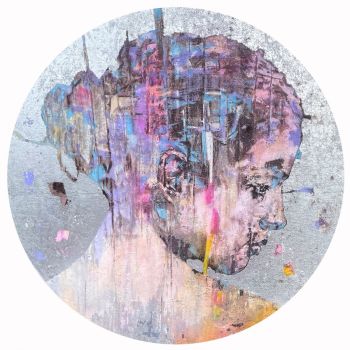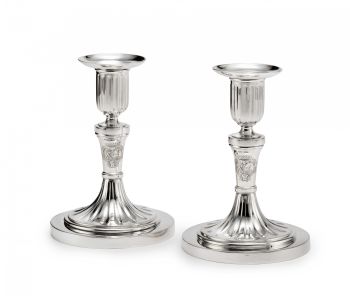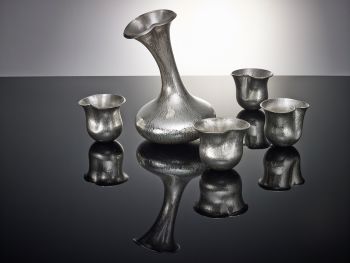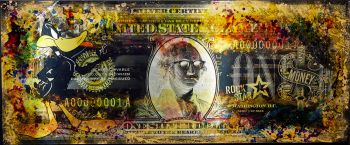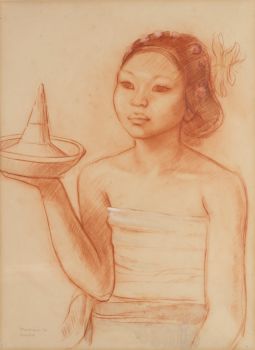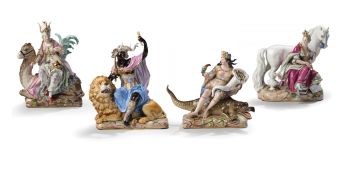Inro Ende des 18. Jahrhunderts, Netsuke Mitte des 18. Jahrhunderts 1850 - 1900
Unbekannter Künstler
HolzGoldSilber
Derzeit nicht über Gallerease verfügbar
Zebregs & Röell - Fine Art - Antiques
- Über KunstwerkINRO, OJIME AND BAKU NETSUKE SIGNED KOMA KORYU (DIED BEFORE 1789)
Inro late 18th century, netsuke mid 18th century
Gold lacquered six-compartment inro, decorated in gold and silver hiramaki-e and takamaki-e and with red lacquer, on one side with a Dutchman, his dog and a Javanese servant holding a sunshade, on the other side a Dutch ship with black sails, the inside of the compartments decorated with nashiji, the netsuke, in the form of an elephant and a boy trying to climb onto it, cedarwood.
Inro H. 9 x W. 6.3 cm
Netsuke L. 6 cm
Provenance:
The Frits Philips Collection
Note:
Koryũ family name was Kimura, but this was changed to Koma on his adoption by his brother-in-law Koma KyühakuIII, whose pupil he became. Koma Koryũ was a pivotal figure in the later Koma school, absorbing the skills of his distinguished teacher and passing them on to Kansai I. His pupils also included Omura Gyokuzan and Nomura Kyüho. Koryũ was an inro specialist, but some other artefacts by him are recorded as well.
The decoration of the inro is most likely taken from an early Nagasaki woodblock print of a Dutchman and his servant holding a sunshade, possibly one published by Hariya in the mid 18th century. Since the Dutch, having pockets in their coats and trousers, did not use inro, this inro most likely was not made for export but to satisfy the Japanese fascination for the exotic foreigners. Unlike netsuke of Dutchmen, inro depicting Dutchmen are not common ( for a few examples see A Collection of Nagasaki Colour Prints and Paintings by N.H.N. Mody, plate. 218). The netsuke of the elephant, an animal introduced by the Dutch into Japan, could also be an example of the Japanese fascination with the exotic. - Über Künstler
Es kann vorkommen, dass ein Künstler oder Hersteller unbekannt ist.
Bei einigen Werken ist nicht zu bestimmen, von wem sie hergestellt wurden, oder sie wurden von (einer Gruppe von) Handwerkern hergestellt. Beispiele sind Statuen aus der Antike, Möbel, Spiegel oder Signaturen, die nicht klar oder lesbar sind, aber auch einige Werke sind überhaupt nicht signiert.
Außerdem finden Sie folgende Beschreibung:
•"Zugeschrieben …." Ihrer Meinung nach wohl zumindest teilweise ein Werk des Künstlers
•„Atelier von ….“ oder „Werkstatt von“ Ihrer Meinung nach eine Arbeit, die im Atelier oder in der Werkstatt des Künstlers, möglicherweise unter seiner Aufsicht, ausgeführt wurde
•„Kreis von ….“ Ihrer Meinung nach ein Werk aus der Zeit des Künstlers, das seinen Einfluss zeigt, eng mit dem Künstler verbunden, aber nicht unbedingt sein Schüler
•"Art von …." oder „Anhänger von ….“ Ihrer Meinung nach eine Arbeit, die im Stil des Künstlers ausgeführt wurde, aber nicht unbedingt von einem Schüler; kann zeitgenössisch oder fast zeitgenössisch sein
•„Art von ….“ Ihrer Meinung nach ein Werk im Stil des Künstlers, aber späteren Datums
•"Nach …." Ihrer Meinung nach eine Kopie (jegliches Datums) eines Werks des Künstlers
• „Unterzeichnet …“, „Datiert …“. oder „Beschriftet“ Ihrer Meinung nach wurde das Werk vom Künstler signiert/datiert/beschriftet. Das Hinzufügen eines Fragezeichens weist auf einen Zweifel hin
• „Mit Unterschrift …“, „Mit Datum …“, „Mit Aufschrift ….“ oder „Trägt Unterschrift/Datum/Beschriftung“ ihrer Meinung nach die Unterschrift/Datum/Beschriftung von jemand anderem als dem Künstler hinzugefügt wurde
Sind Sie daran interessiert, dieses Kunstwerk zu kaufen?
Artwork details
Related artworks
- 1 - 4 / 12
Unbekannter Künstler
The Stamford Raffles Secretaires.1800 - 1813
Preis auf AnfrageZebregs & Röell - Fine Art - Antiques
Unbekannter Künstler
A rare Japanese export lacquer medical instrument box1650 - 1700
Preis auf AnfrageZebregs & Röell - Fine Art - Antiques
1 - 4 / 20- 1 - 4 / 24
Unbekannter Künstler
EIN JAPANISCHES MODELL EINES NORIMONO, EINES PALANQUINS1650 - 1700
Preis auf AnfrageZebregs & Röell - Fine Art - Antiques
 Kuratiert von
Kuratiert vonDanny Bree
Unbekannter Künstler
EIN UNGEWÖHNLICHES INDONESISCHES SILBERGERICHTlate 17th
Preis auf AnfrageZebregs & Röell - Fine Art - Antiques
Unbekannter Künstler
EIN GILT-SILBER SRI LANKAN DOKUMENT SCROLL CONTAINER19th century
Preis auf AnfrageZebregs & Röell - Fine Art - Antiques
Unbekannter Künstler
A silver spoon commemorating Juff’ Margareta van Hoorn1656 - 1694
Preis auf AnfrageZebregs & Röell - Fine Art - Antiques
Unbekannter Künstler
The bell of the VOC fortress in Jaffna, Sri Lanka1747
Preis auf AnfrageZebregs & Röell - Fine Art - Antiques
 Kuratiert von
Kuratiert vonDanny Bree
Unbekannter Künstler
Zwei Studienporträts von Mas Marco Kartodikromo1900 - 1950
Preis auf AnfrageZebregs & Röell - Fine Art - Antiques
1 - 4 / 24 Kuratiert von
Kuratiert vonGallerease Magazine
Tilmanus Nicolaus Maastricht
Missale Romanum mit holländischen Silberbeschlägen1788 - 1792
Preis auf AnfrageJacob J. Roosjen SRI
Johannes Schiotling
Ein Paar holländische silberne Kerzenhalter1784
Preis auf AnfrageJacob J. Roosjen SRI
1 - 4 / 24Unbekannter Künstler
EIN GILT-SILBER SRI LANKAN DOKUMENT SCROLL CONTAINER19th century
Preis auf AnfrageZebregs & Röell - Fine Art - Antiques
Unbekannter Künstler
The Stamford Raffles Secretaires.1800 - 1813
Preis auf AnfrageZebregs & Röell - Fine Art - Antiques
Theo Meier
Eine balinesische Frau mit Opfergaben1936
Preis auf AnfrageZebregs & Röell - Fine Art - Antiques
Unbekannter Künstler
EIN UNGEWÖHNLICHES INDONESISCHES SILBERGERICHTlate 17th
Preis auf AnfrageZebregs & Röell - Fine Art - Antiques
Unbekannter Künstler
A rare Japanese export lacquer medical instrument box1650 - 1700
Preis auf AnfrageZebregs & Röell - Fine Art - Antiques
1 - 4 / 12

